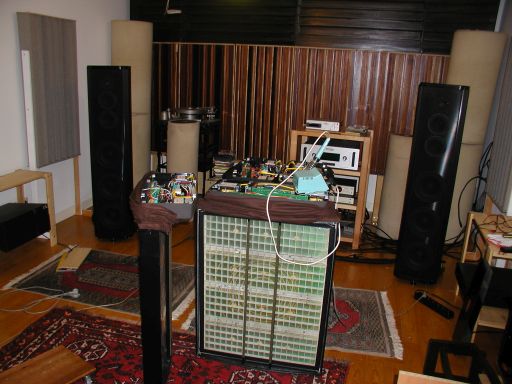After being in Steve's well treated average sized room, a Rives audio room of average size, 3 full SMT treated small rooms, Marty's well treated big room, and some big untreated rooms, treatment can only get you so far without size. Small but treated rooms still have issues, and while I am sure they would work better than the room untreated, those issues IMO can be rid of only through DRC, so spending loads on acoustic treatment to me does not make sense. Sure, the right corner traps and diffusers, some helmholtz, curtains over glass, and something on the floor. If i had the money, I would build the right size room, add a little bit of treatment, and that would work. If I did not have the right size room and still had issues after basic treatment, I would add room correction
bonzo75, Are your comments assuming the right size speaker for a given room, or are they based on too much speaker for a small room? I would be thrilled with a room the size of Ron's, but I have not heard such large speakers before. Based on my limited experience with these large, four tower, systems, I think I would tend to prefer a smaller system if the room is not large enough to handle the speakers, and or if it could not be adequately treated. I have heard small speakers in large rooms, and large speakers in small rooms. Proper treatment is very important and can vary tremendously. I have always preferred smaller speakers in larger rooms to the opposite. But I have not heard the speakers which Ron is considering, and if they could be made to work in his room, with the proper treatment, the added impact, extension and sheer scale, would perhaps change my mind, and I would think especially with large scale, complex music, which Ron listens to on occasion.


